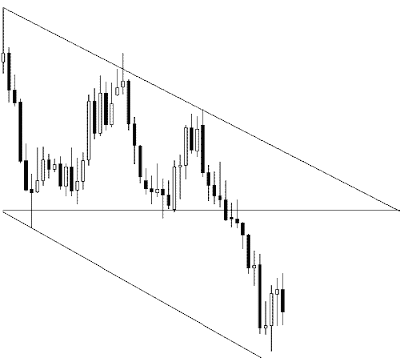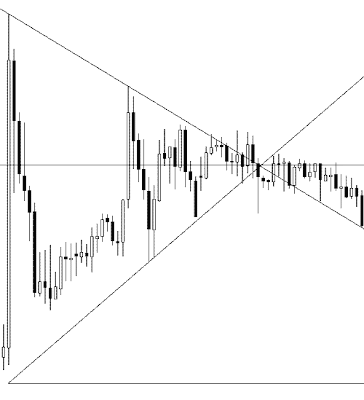You have all read that it was imperative to keep a diary of
trading in order to remember its operations and thus improve.However very few books you have proposed a plan, approach and a practical way to keep this journal. What should it contain? what form it takes?
Where to keep a trading Journal?
The first problem in keeping a
trading journal is crass equipment.Where to keep?in what form?
You've probably all tried successively calendar paper, notebooks, file Word, Excel or Access the basis for those who know.However, these tools have their limits still on the agenda paper it is difficult to search, the Word file can not filter the information, the Excel file can filter (to isolate lose trades for example) but is not suitable for the insertion of copies of screens when the base access, it is operational after having planned and will be a rigid framework (changing its structure takes more time than adding a column in an Excel file after the table because it must touch screens and all states).inally, if you use multiple machines (home, work, laptop in the garden) modifying the file must be transferred to each of them (unless you use the file only from a USB key).
A solution exists: the private blog
The blog is not something that only serves to expose its trades in the eyes of all. It can be used for private and personal journal very comprehensive and effective (this is his first goal).He has all the advantages because you can write as much text as you want, insert images (chart), creating categories (win, loss, ideas, system, todo, ...), show that the notes belonging to a category where published between such and such date, search, etc ... And all this being totally independent of the machine where you work, more file to be transported from one PC to another.
For my part I use the new version of Blogger (http://beta.blogger.com, beta version of the new Google Blog - http://www.blogger.com), it represents a word happening on the blog, you are the only one who can access it.Their system is simple, efficient and very fast access, perfectly suited to the arrest of a Trading Journal.
More than a trading journal, I made my "
Trading Desktop", I put all my ideas as they come, the results of statistical or backtest systems, the most promising and those not carrying anything.I also met my "todo list", all these things suggest that permanently postponed and some of my discoveries forward (soft, suppliers of datas, ...).
So my centralized repository of trading and 100% private.
To find myself using the categories that I stated in the "Labels" (Blogger in the bottom of the editing posts), for example:
- Win (trade winner)
- Loss (losing trade)
- Idea (idea)
- System (description of a trading system)
- Backtest (backtest results)
- Studies (results of a study)
- Indicators (technical)
When you see your newspaper, a simple click on the "win" will display all posts with this label, so you can easily filter the blog on your winning trades, your latest ideas, etc ... without having to sort all content.You will only see posts in category "win" or "idea".
Returning now trading on the newspaper itself.
What should contain a Trading Journal
It must not be overloaded, when we start, there is a tendency to always put more information than necessary.The hour of trade to the nearest second example is often not matter, we realize after 50 operations that never use this information in our reading of the newspaper (except that the hour of trade is at the heart of the system of course).To be effective, a Trading Journal must go to the bottom line is a means to assess its mistakes but also systems with which one is most effective and those on the contrary we are losing consistently.
Important factors are:
- The description of trade
- The setup: the conditions that led to trade
- The result: P & L in pips and $
- Performance Scoring
- Execution Scoring
- Feedback Summary
- Chart: screenshot
The description of trade must be simple and short, for example (hypothetical case):
Short GBPJPY @ 222.30, TP1 @ 222.00, TP2 @ 221.80, SL @ 222.50, SL @ Breakeven if TP1 Hit Short GBPJPY@222.30, TP1@222.00, TP2@221.80, SL@222.50, SL @ Breakeven if TP1 Hit
The setup may be the name of one of your systems:
Setup: MM Pullbacks / 15 min
Or a description of conditions:
Setup: Hit MM20 + Down Trend / 15 min
The result can be expressed in pips, in dollars or both and in case of multiple contain details:
P & L: +30 pips (Exit 1 @ TP1, Exit 2 @ Breakeven)
The scoring performance is one of the most important, it is inspired by John Carter proposals:
1. Target Hit Hit Target
2. profitable Output at a price different from Target but beneficial
3. Breakeven
4. Output at a different price but losing the Stop
5. Stop Hit
When you make your stock of the week, month, quarter and year, your resume and complete a scoring average.You can then separate them by setup to identify the most successful setups. If the setup MM Pullbacks displays at the end of the month an average of 3.87 while the setup Volatility Breakout 15min displays 1.82, which must be removed from my Trading plan? It is precisely to respond effectively to such Trading question that the Journal is so important.
The Execution Scoring is equally important, it lets you know if you have met your strategy.
1.Trade executed according to plan
2.Target Entry executed according to plan but before leaving Target
3.Entry executed according to plan but stop and removed or distant target
4.Late entry (quite in the terms of setup) and / or non-positioned Target (output target)
5.Unrestrained trade (no real setup in place at the time of trade, the worst case)
In the same way you can regularly average your scores to see if you meet your plans. Both the Performance Scoring depends on the quality of your systems and market uncertainties, all your Execution Scoring is up to you and you alone. He tells you if you are a trader impulsive or to a trader who Fixed a plan and follow to the letter. As you already know your goal is obviously to strive 1.
Finally I recommend you also see every weekend your trades and their performance in an Excel spreadsheet to help you build a scoreboard encrypted (P & L Gross, P & L / Setup, scoring middle period, ...).But unlike the trading will log you in this Excel spreadsheet or comment or details of trade, or chart.Do a weekly review of your trades and publish it on your blog, you'll see your P & L of the week, your scoring and your comments on the positive, negative and what needs to be improved for the following week.All this can only help you become a better trader.







